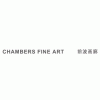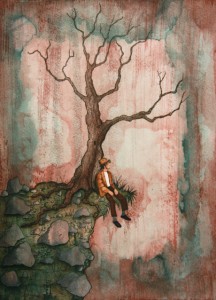 |
Chambers Fine Art
Red No.1-D, Cao Changdi,
Chaoyang District,
Beijing, 100015, China map *
tel: +86 10 5127 3298
fax: +86 10 5127 3298
send email
website
|

Enlarge
|
| In Between
|
|
| by Chambers Fine Art
Location: Chambers Fine Art Beijing
Artist(s): Jacob FEIGE, Jeffrey SCHWEITZER
Date: 8 Jan - 28 Feb 2011
Chambers Fine Art Beijing is pleased to announce the opening of In Between: Paintings by Jacob Feige and Jeffrey Schweitzer.
Chambers Fine Art is pleased to announce the opening on January 8, 2011 of In Between: Paintings by Jacob Feige and Jeffrey Schweitzer. Feige and Schweitzer are both graduates of the Cranbrook Academy of Art, one of the leading graduate schools of art, architecture and design in the United States. United by educational background and ties of friendship, both artists are painters and work in the traditional media of oil on canvas and in wash on paper. They also share an interest in landscape, one of the defining themes of western figurative art since the seventeenth century, although they use it for expressive purposes which reflect differences in personality and cultural references.
For Feige the landscape of North America in the first years of the twenty-first century is as inspirational as it was to the painters of the Hudson River School in the mid-nineteenth century. Unlike his predecessors, however, who responded to the grandeur of the natural environment while remembering the great achievements of western Old Masters, Feige grew up in an age in which classical references had been supplanted by contemporary cultural phenomena and the language of abstract painting. Speaking of his work, Feige has described how “within the material and conceptual framework of painting, I allow the American landscape, science fiction, otherworldly geometry, and many other experiences to coalesce and fracture, producing new forms and new questions. The process is a material one. Sometimes I situate geometric forms in the space of the landscape, while at other times they sit on top of it, in the space of the viewer. Similarly, transparent pours of paint often become atmosphere and weather in the space of the landscape. Other times they flow on the surface of the painting, becoming physical records of an oozing drift.”
Noteworthy for their painterly quality and exquisite coloring, Feige’s paintings also offer an intriguing glimpse into the mind of the artist as he contemplates the dilemma facing a figurative artist today, working “in between” diametrically opposed approaches to picture-making. In contrast, Schweitzer’s landscapes owe little or nothing to nature observed. His craggy mountains, narrow footpaths and rushing streams owe more to popular illustrations and the art of the fantastic than they do to anything seen in the world outside. Indeed, when his mountains become detached from their moorings and float in mid-air, his imagery is not unrelated to the dream-world of Avatar. As with Feige, there is concern for the way in which atmospheric washes of color and visual accidents undermine the solidity of precisely delineated forms. Schweitzer has described how “the surfaces of these works are first built up with layers of acrylic matte medium. Many layers of ink are added and removed revealing the textures created by the medium.” In most of Schweitzer’s landscapes, however, a human presence which Schweitzer identifies as “an idealized self-portrait” offers a different perspective on the geological and natural phenomena that provide the setting. Collaged onto the works as the final physical act of putting himself into the work, the solitary Drifter whether lost in a forest, perched on a rock or dwarfed by a giant wave, might seem to embody a forlorn commentary on the human situation. Preoccupied with his own thoughts, he plods on with the determination of a character from Samuel Beckett. As perceived by the artist, however, his sense of purpose results from quiet optimism rather than defeatism.
Exhibiting together for the first time, Feige and Schweitzer offer a revealing commentary on each other’s work and a clear demonstration of the way in which the language of painting is still profoundly indebted to local traditions and concerns. |
|
|
|
|
